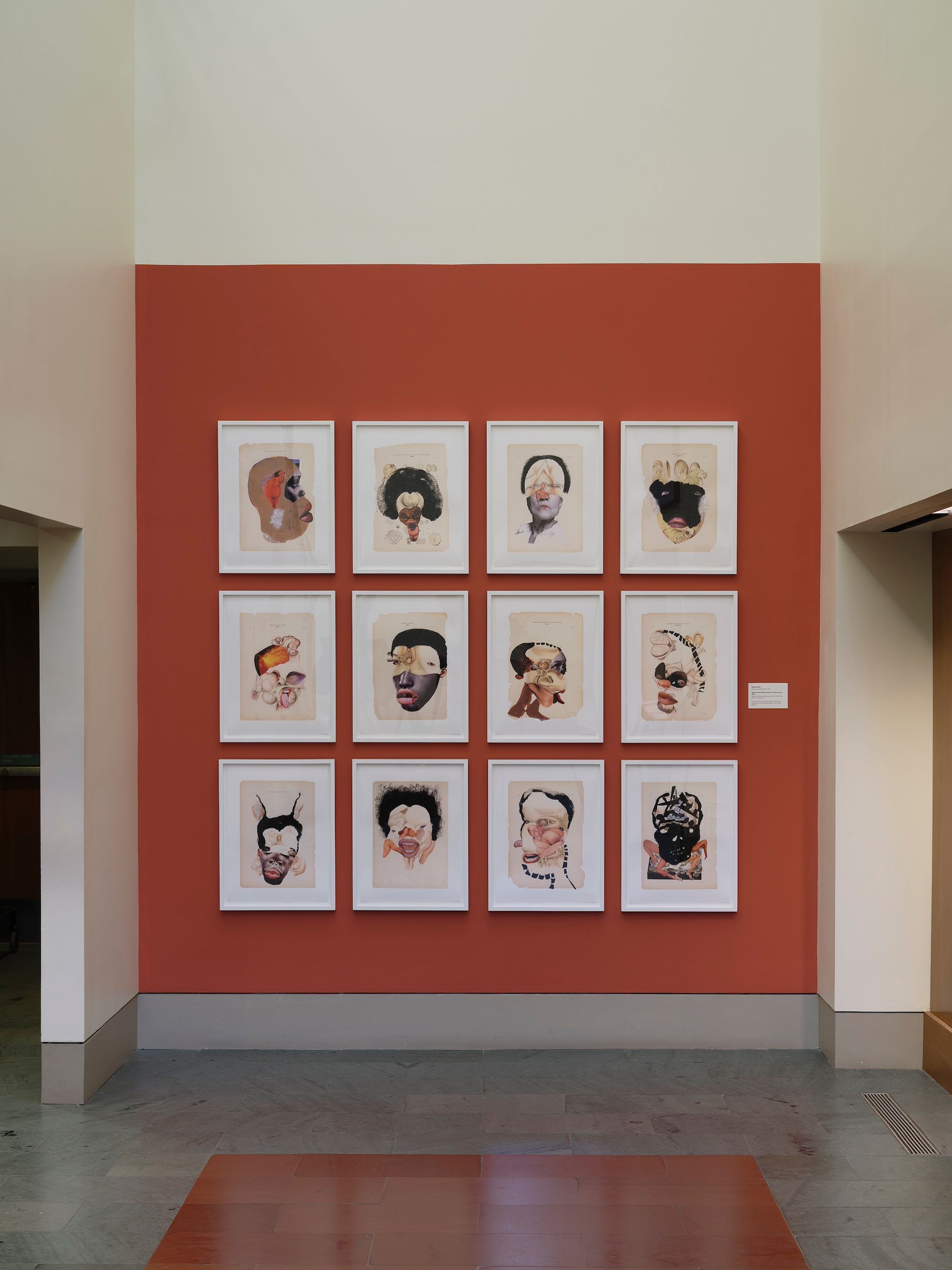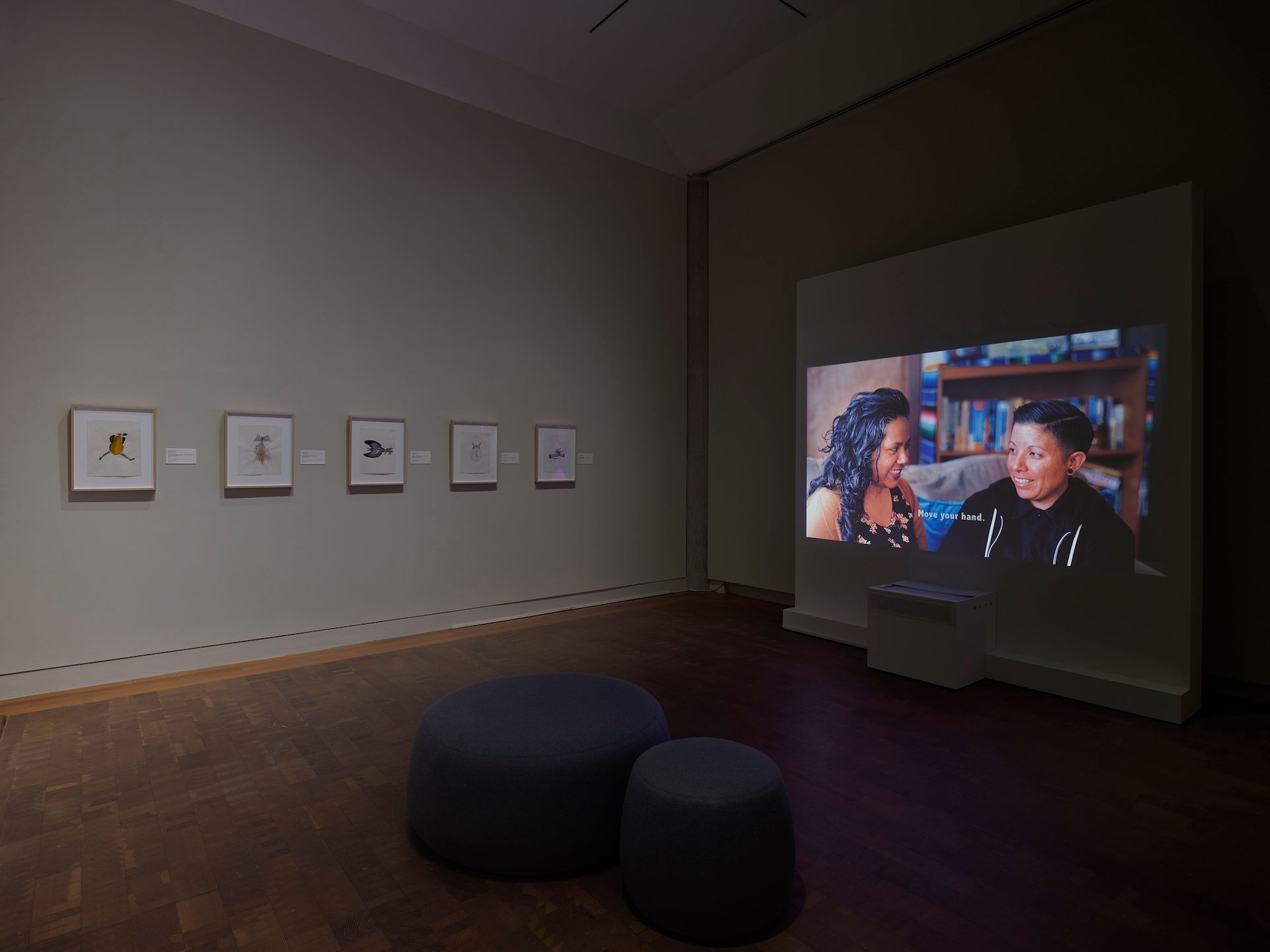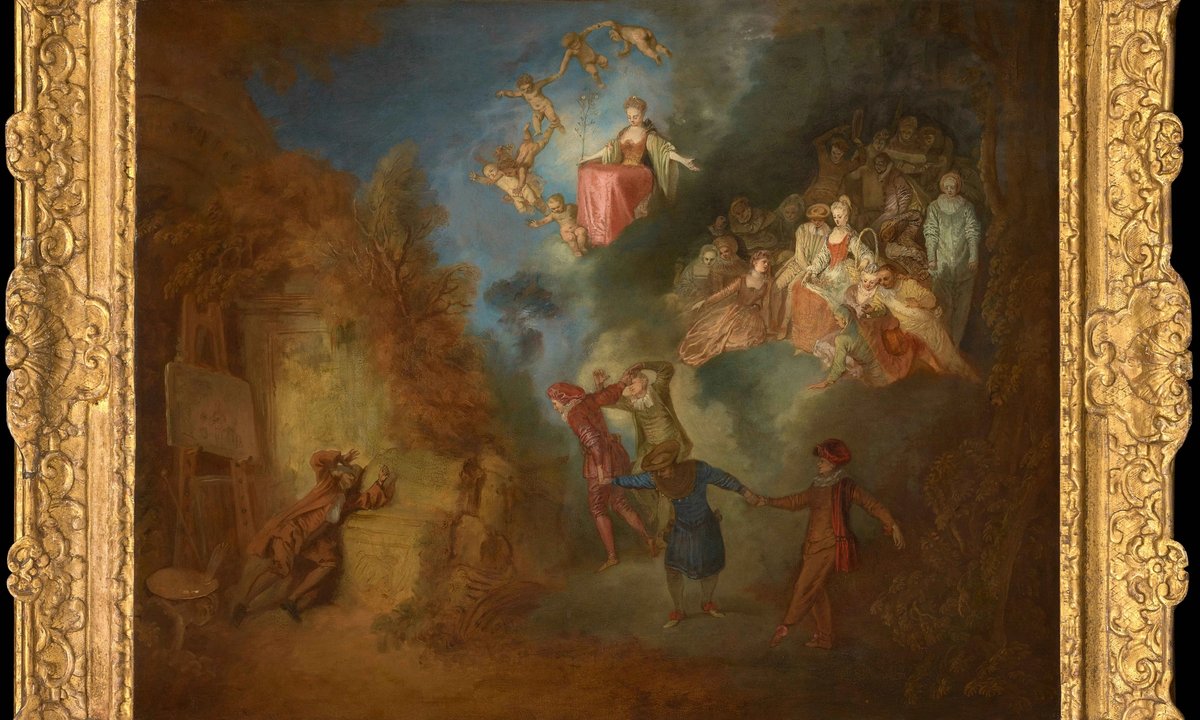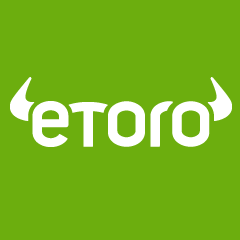The Chicago Museum of Contemporary Photography’s travelling exhibition Reproductive: Health, Fertility, Agency is at Vassar College’s Frances Lehman Loeb Art Center in upstate New York for election season and through the next US president’s inauguration. The show’s curatorial vision first materialised at Columbia College in 2021, Roe v. Wade’s last full year standing. Now, in the Dobbs v. Jackson era—in a time of continually circulating misinformation about reproductive health and increasing peril for anyone with pregnancy complications or who simply does not wish to be pregnant—the exhibition necessarily hits harder. As people in the US live through the collapse of reproductive freedom, works by Laia Abril, Candice Breitz, Elinor Carucci, Jess T. Dugan, Krista Franklin, Candy Guinea, KING COBRA (Doreen Garner), Joanne Leonard, Wangechi Mutu and Carmen Winant demonstrate that we were never truly free. In spite of Roe, we have never enjoyed unconditional access to reproductive health care.
Especially on a college campus, art addressing politics risks turning aesthetics into advocacy and sensibility into slogans, asking both what art can do for education and what education can do for art, effectively diminishing both. At the Loeb Art Center, the apparatus around the show is trauma-informed and invested in interactive education, including a reflection wall, a companion zine titled Reproduce Me, a reference library and a trigger warning. But there is nothing didactic about the work or the curation. Instead, the art traffics in the poetic metamorphosis of its subjects.
The sheer scale of intersectional perspectives, shifting between personal, intergenerational, cultural and archival, sparks unexpected associations and affinities in a larger context of paternalistic control and colonial violence. You might fear being overwhelmed by bloody horror and heartbreak, but the show percolates enough pleasure, solidarity, wit, lyricism and beauty to be a testament to resilience. Resisting flattening and spectacle in the name of normalising a vast range of reproductive experiences is one of the more revolutionary aspects of this show.

Installation view of Reproductive: Health, Fertility, Agency at Vassar College’s Frances Lehman Loeb Art Center with works by Wangechi Mutu Photo by Thomas Barratt Photography
Moving through the show’s four galleries feels like moving through four distinct conversations buzzing with sympathetic correspondences. Wangechi Mutu’s magnificent Histology of the Different Classes of Uterine Tumors (2006) sets the tone, asserting an uncanny corporeality that foregrounds the individual within the collective and the intimate within the historical. It consists of a calendar-like block of 12 mixed media collages, each built on a page of Victorian-era illustrations of uterine and cervical disease. Colonial medicine and critical anthropology dovetail with fashion and pornography in Mutu’s Afrofuturistic collages. Most display atomised features of Black femme figures who are not necessarily women, all wildly distorted anatomies and profoundly deranged faces that subvert hysterical anxieties about racialised female sexuality. These mouths and vulvas are as ravaged as they are ravenous. They extend an arresting metaphor for the entitled consumption of labouring people. If issues of bodily autonomy and white culpability were (inexplicably) not on your mind as you entered the show, Mutu sets you right.
Representative and reproductive justice collude to engage bodies, narratives and histories that have been kept largely absent from public view. An excerpt from Laia Abril’s text image project, The History of Misogyny, focuses on what happens when women do not have access to abortion. It is one of several series in the show linked to books and archives, drawing us into dialogues beyond the show’s walls. Krista Franklin and Elinor Caruso depict stories about their maternal lineages, including medical trauma, gender performance and the fetishisation of fertility. Jess T. Dugan and Candy Guinea offer vivid portraits of gender queer parenting.
Doreen Garner confronts the 19th-century “father of gynaecology”, J. Marion Sims, who conducted years-long sadistic experiments on unanaesthetised Black women under the guise of research that he hoped would produce more children born into slavery and thus more profit for white enslavers. Her monument to one of his victims, Betsey’s Flag (2019), a radical reimagination of Betsy Ross’s 1777 US flag design, hangs heavy in the middle of the first room, casting a deep shadow that reminds visitors just how much of the US was built on the backs of Black women.
By far the oldest work in the show, Joanne Leonard’s series of photo collages made in response to her miscarriage in late 1973, the year of the Roe v. Wade decision, serves to anchor the way the private and collective interplay. It comes as a reminder mid-way through the show that reproductive cycles have increasingly become politicised loops of time.

Installation view of Reproductive: Health, Fertility, Agency at Vassar College’s Frances Lehman Loeb Art Center with works by Joanne Leonard (left) and a video by Candy Guinea (right) Photo by Thomas Barratt Photography
How differently will the show land after the next president is inaugurated? Unfortunately, we may not get much of a chance to find out due to the chilling effect of 21 state abortion bans and a constant supply of “foetal personhood” legislation that criminalises pregnancy loss and stigmatises infertility. Since the Dobbs v. Jackson decision, 15 states have changed the definition of abortion, creating even more barriers to information, even more fear, confusion and dead women.
As art institutions are being challenged to own up to their own investments in structural sexism, racism and settler capitalism, the question of pre-emptive self-censorship—of what a museum or gallery is not willing to display—often goes unseen. How do university galleries particularly negotiate cultural conflict and fortify integrity in this climate? Last year in the predominantly conservative state of Idaho, Lewis-Clark State College Center for Arts and History removed six works depicting abortion and birth control from the exhibition Unconditional Care: Listening to People’s Health Needs.
Similarly, Reproductive: Health, Fertility, Agency was originally planned to travel to the Stone Gallery at Boston University in autumn 2025. After a year of negotiating terms and logistics, Boston University abruptly retracted their commitment amid concerns about anti-abortion protests. This decision, made in April 2024, came shortly before the university’s new president, Melissa Gilliam (daughter of the painter Sam Gilliam), a former professor of health justice and pioneer in sex education and gynaecological research, took office. Hosting Reproductive: Health, Fertility, Agency would have highlighted her advocacy, in what might have been a proud moment for the university, one in line with its long history of progressive work around gender—including pioneering a new interdisciplinary programme on reproductive justice and training Judith Vaitukaitis, the reproductive neuroendocrinologist who invented the pee stick.
Boston University’s apparent self-censorship reveals the conflicting frameworks—aesthetic, pedagogical and financial—in which art on campus functions. But if a private, nondenominational, urban university gallery in Massachusetts is afraid to engage in dialogue around reproductive issues, what kinds of public conversations can we expect in the future?
- Reproductive: Health, Fertility, Agency, until 2 February 2025, Frances Lehman Loeb Art Center, Vassar College, Poughkeepsie, New York







